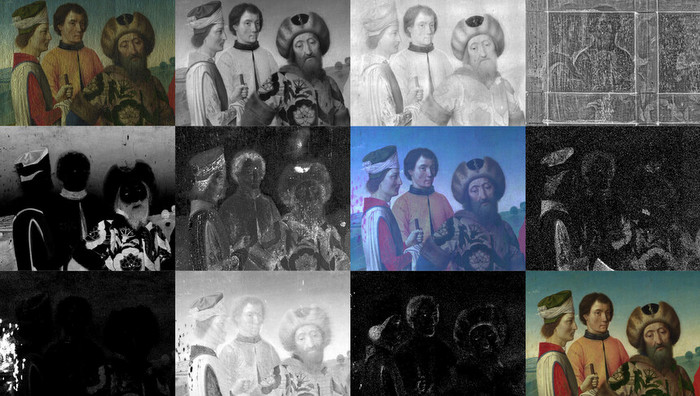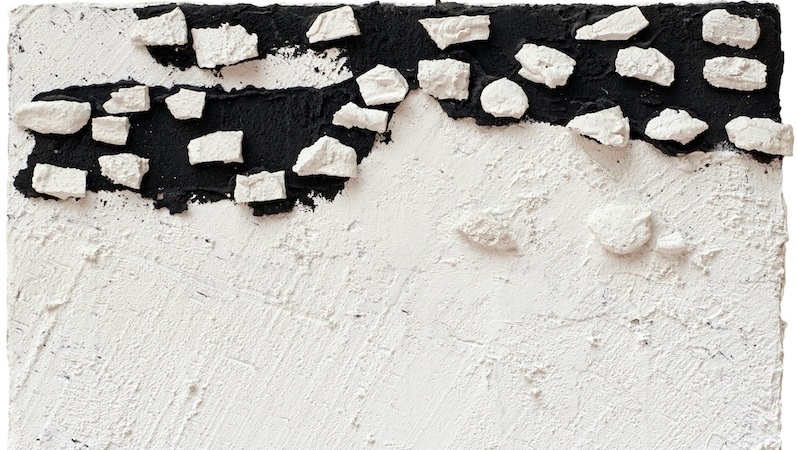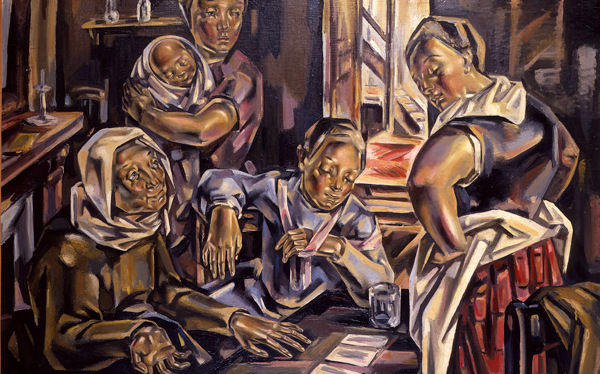Michel Soskine inaugurates the season with the second exhibition in Madrid of Spanish artist Ángel Alonso (Laredo 1923 - Paris 1994).
Exiled in France since 1947, a man of strong character and overwhelming painting, inseparable friend of the well-known Spanish philosopher María Zambrano, Ángel Alonso has often been forgotten by the history of Spanish art. Twenty years after the artist's death in Paris, his work reappears in full force and radicalism. Quoting the art historian Francisco Jarauta, "Alonso has mastered the materials and the technique developed by himself which embodied the colors that obsessed him".
The exhibition gathers a selection of paintings from 60´s to the 90´s, a period in which the artist reaches its most radical style.
In the last years of his life and after a period in which he mainly worked with black and white - such as in the series "Desastres", Angel Alonso returns to color "achieving powerful paintings in green, yellow, orange and white " says the writer Juan Carlos Marset about Alonso’s work. The exhibition is divided in two rooms: one exclusively composed of the black and white paintings and the other dedicated to works with colored pigments. Ángel Alonso creates colors and works them through texture. “The colors are tenacious, they make you open your eyes wide”, said the painter. The tones exceed the limits of the canvas and mix with the materials, with soil, wood, stones and objects that the artist inserts into the works. "Color goes beyond the canvas, overflows the frame, deletes or ignores the format," explains Marset.
During Alonso’s last period, often through the small format paintings, "the texture is fully purified and the color layer becomes porous and subtle." The artist does not abandon his ongoing research on the materials and technique, searching for the essence of painting, as he did throughout his entire career. So, his last two series, one in black on wood and the other in black on white, represent for Marset "the conclusion of his work".
As a man of strong, temperamental and solitary character, Angel Alonso he wanted to stay away from the art market and even declined to exhibit his works in the prestigious Parisian gallery Jeanne Bucher in 1952. His refusal kept him away from commercial venues and supported only by selected private collectors.
ÁNGEL ALONSO
(1923 Laredo, Spain – 1994 Paris, France).
Between 1938 and 1939, after the fall of Bilbao during the Spanish Civil War, Ángel Alonso was arrested, imprisoned and sentenced to death. His family presented a clemency petition, which was then accepted.
He returns home but, a few months later, he is arrested again for desertion, not having completed the compulsory military service. He is deported to the island of Fuerteventura. Alonso manages to escape and, after a period of hiding, reaches the French border in 1947. At this point he permanently leaves Spain and heads to Paris.
The years he spent in prison constitute one of the foundations of his unbreakable friendship with Maria Zambrano (1904-1991, Spanish essayist and philosopher) also a political refugee. They will come to know each other in the early 50s. A series of fortunate encounters and friendships guide the first stage of his work: Vieira da Silva, Árpád Szenes and especially Pierre Tal-Coat and Nicolas de Staël. Guy Dumur in Nicolas de Staël, le combat avec l’ange, recalls: "He [de Staël] meets with known people. First of all, Georges Braque, whom he sees regularly, André Lanskoy, already mentioned, a young Spanish painter, Ángel Alonso".
In 1950, under the threat of extradition back to the Spain of Franco by the French authorities, a support committee is organized, composed among others, by Michel Leiris, Francis Ponge, Henri Calet and Pierre Descargues. Alonso will only get the French nationality in 1971 with the support of his stepfather, Roger Rigaud, former vice president of the Council of Paris.
In 1952, Ángel Alonso waives to exhibit his paintings at the prestigious Galerie Jeanne Bucher. In 1955 he exhibits at the Galerie André Schoeller, which at this time represents Rebeyrolle, Fautrier, Messagier, Duvillier, Gnoli, Arroyo, etc. Starting from this exhibition his materials become denser. In 1956, he moves to Laurencie, in Limousin, where he lived until 1961. There, Alonso begins to deepen his work on matter and landscape.
In 1962, he discovers the landscapes of Gennevilliers and immediately decides where to live and work, finding an endless source of inspiration and renewal. There he builds his studio. From 1960 he develops his most important research to what could be a triptych of soil, coal and straw, sometimes mixed with clay and stone. He begins the series of large black paintings compounding coal dust, burned plants, straw, leaves and soil.
In 1972, he publishes under a pseudonym (A. Gennevilliers), a long poetic text that intrigues the readers of La Délirante (# 4/5). Avec Beauté Cadavre et L’Âme noire et la Peinture, Lalaurencie Éditeur (posthumous edition, 1996), is one of his very rare publications, considering he didn't stop writing, driven by the same need and with the same rigor and creativity of his paintings.
In 1982, Alonso moves to the number 7 of rue Brézin, the studio of his friend Pierre Tal-Coat, whom offers it to him. For a long time he alternates between Gennevilliers and rue Brézin before moving permanently in the early 90s. A year later, Alonso exhibits at Cahiers d'Art gallery. In his work, the color constitutes the landscape itself. With an exceptional expertise on the materials, he doesn't hesitate to create his own reds, greens, yellows, oranges ... springing from the porous surface of his paintings.
Between 1986 and 1989 the Galerie Barbier repeatedly exposes his work.
In 1987, Juan Carlos Marset, Spanish intellectual and academic, close to Maria Zambrano, meets Ángel Alonso in Paris, as part of his research on the philosopher, and becomes aware of the importance of the work by Alonso.
A major retrospective is then prepared in Spain, whereto the entire studio of Alonso is transported. The Désastres series, exhibited in 1992 at the Galerie Sapone in Nice, is the result of his latest research.
The sudden death of Ángel Alonso in Paris on December 20, 1994, transforms this retrospective exhibition into a posthumous tribute. It will take place in France, at the Cervantes Institute (Paris, 1996), and in Spain in the Marcelino Botin Foundation (Santander, August-September 1996) and the Círculo de Bellas Artes (Madrid, January 1997).
In 2009, the Reina Sofia Museum (Madrid) buys a large number of his works, while the Spanish state becomes custodian of his archives (writings, correspondence, documents), aiming at the creation of a foundation in Santander.
Opening Reception September 14th, 8 p.m.
From September 14th to October 28th, 2017.
Related Publications

Atelier Bouts. Research and restoration of masterpieces
April 15, 2024RAMÓN MUÑOZ: A soga y tizón
April 10, 2024











